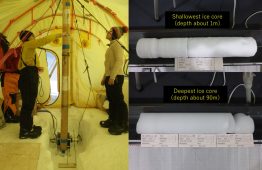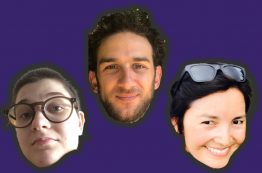Congratulations to our two College of the Environment students recognized in the 2021 Husky 100! The Husky 100 actively connect what happens inside and outside of the classroom and apply what they learn to make a difference on campus, in their communities and for the future. Through their passion, leadership and commitment, these students inspire all of us to shape our own Husky Experience.
Read more »Ice core data show why, despite lower sulfur emissions in U.S. and Western Europe, air pollution is dropping more slowly
The air in the United States and Western Europe is much cleaner than even a decade ago. Low-sulfur oil standards and regulations on power plants have successfully cut sulfate concentrations in the air, reducing the fine particulate matter that harms human health and cleaning up the environmental hazard of acid rain. Despite these successes, sulfate levels in the atmosphere have declined more slowly than sulfur dioxide emissions, especially in wintertime.
Read more at UW News »Equity and Inclusion at the School of Aquatic and Fishery Sciences
Working towards equity and inclusion is a community effort, and one that requires active participation and push for change. The Equity & Inclusion (E&I) Committee is at the helm of advancing diversity, equity, inclusion and justice initiatives at the School of Aquatic and Fishery Sciences (SAFS), and they have been working to make the School and community a more welcoming place.
Read more »UW launches GeoHazards Initiative; names Paros Chair in Seismology and GeoHazards
Leveraging the tectonic laboratory of the Cascadia subduction zone, the University of Washington today announced a new effort to best understand how to study and live with the threats of earthquakes, tsunamis, volcanos, landslides and other seismic hazards. Dubbed the GeoHazards Initiative, the interdisciplinary work aims to develop and promote the adoption of early detection systems both on land and at sea to help prevent the loss of human life and property.
Read more at UW News »Thousands of baby sea stars born at UW lab are sign of hope for endangered species
Just a few days shy of the first day of spring, scientists at Friday Harbor Laboratories on San Juan Island had reason to celebrate. Dozens of juvenile sea stars, no bigger than a poppy seed, had successfully metamorphosed from floating larvae to mini star — the important first step toward becoming an adult. Between now and then, these sunflower sea stars, the largest sea star species in the world, will grow up to 24 arms and a colorful body the size of a serving platter.
Read more at UW News »





